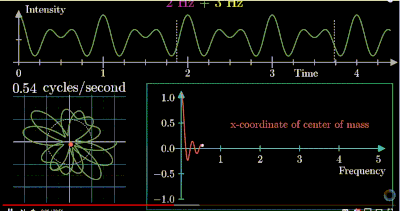Mathematics Yoshio Sep 8th, 2023 at 8:00 PM 8 0
Natural Exponential Function
自然常數 eThe number \(e\), also known as Euler's number, is a mathematical constant approximately equal to 2.71828 that can be characterized in many ways. It is the base of natural logarithms. Its value is the limit of \({(1\;+\;1/n)}^n\) as \(n\) approaches infinity.
The first references to the constant were published in 1618 in the table of an appendix of a work on logarithms by John Napier. However, this did not contain the constant itself, but simply a list of logarithms to the base \(e\). It is assumed that the table was written by William Oughtred.
\(e=\lim\limits_{n\rightarrow\infty}{(1+\frac1n)}^n\)
\(e=1+\frac1{1!}+\frac1{2!}+\frac1{3!}+\frac1{4!}+\frac1{5!}+\cdots\)
Euler's number frequently appears in problems related to growth or decay, where the rate of change is determined by the present value of the number being measured. One example is in biology, where bacterial populations are expected to double at reliable intervals.
\(e^{-x}=1–\frac x{1!\;}+\frac{x^2}{2!\;}–\frac{x^3}{3!\;}+\frac{x^4}{4!\;}–\frac{x^5}{5!\;}+\;\cdots\)
One property that goes to the essence of e and makes it so natural for logarithms and situations of exponential growth and decay is this:
\(\frac{\operatorname d{}}{\operatorname dx}e^x=e^x\)
This says that the rate of change of ex is equal to its value at all points. When x represents time, it signifies a rate of growth (or decay, for negative x) that is equal to the size or quantity that has accumulated thus far.
Euler's Formula
Euler's formula for complex analysis\(e^{ix}=\cos\left(x\right)+i\sin\left(x\right)\)
\(\sin x=\frac{e^{ix}-e^{-ix}}{2i}\)
\(\cos x=\frac{e^{ix}+e^{-ix}}2\)
\(\sinh x=\frac12{(e^x-e^{-x})}\)
\(\cosh x=\frac12{(e^x+e^{-x})}\)
Euler's Formula and Fourier Transform



The Golden ratio and the Euler's number
The Golden Ratio 1.6180... \(\phi\)
The Euler's number 2.71828... \(e\)
\(e^{i\mathrm\pi}+2\phi=\sqrt5\)
\(\phi=e^\frac{\mathrm{iπ}}5+e^{-\frac{\mathrm{iπ}}5}=2\cos(\frac{\mathrm\pi}5)\)
\(\phi^2-\phi-1=0\)
\(\frac{{(e^e)}^e}{1000}=1.6181..\approx\phi\)
Beamforming

Beamforming is a technique used to improve the signal-to-noise ratio of received signals, eliminate undesirable interference sources, and focus transmitted signals to specific locations.

Beamforming or spatial filtering is a signal processing technique used in sensor arrays for directional signal transmission or reception.








